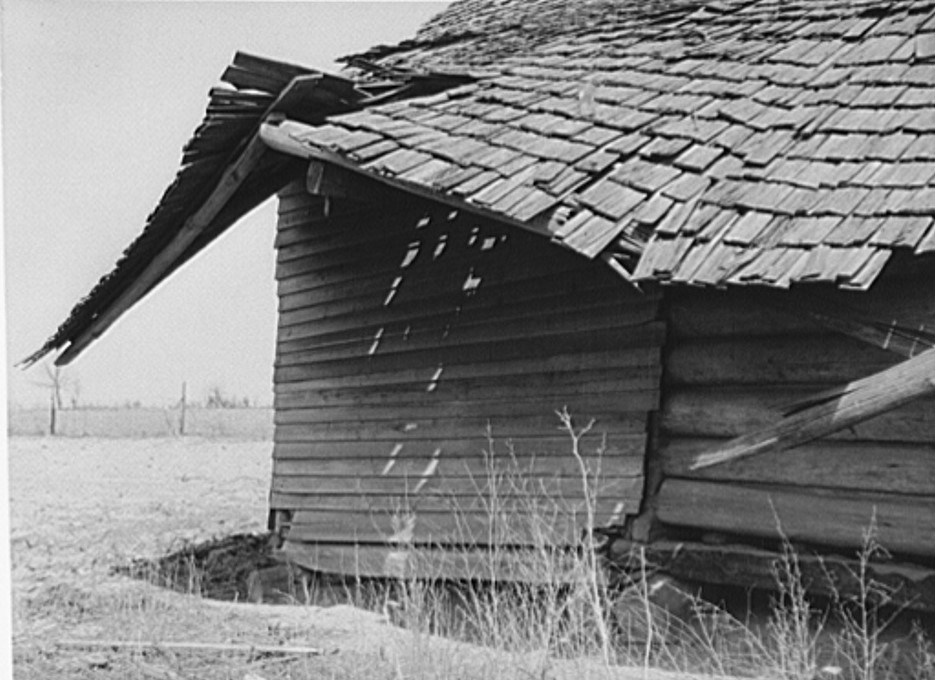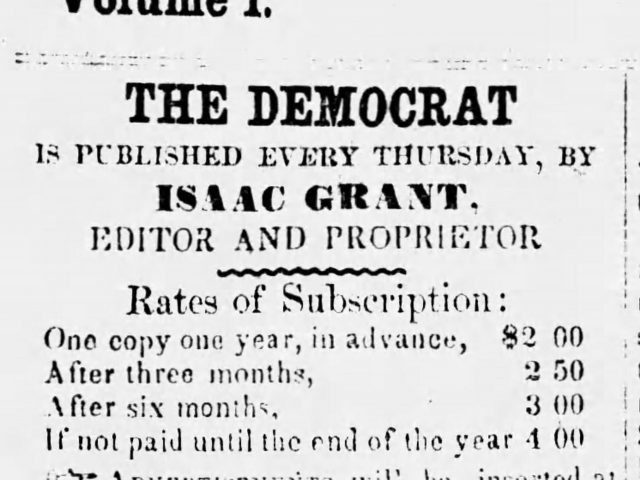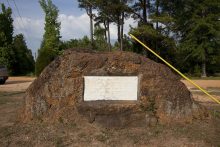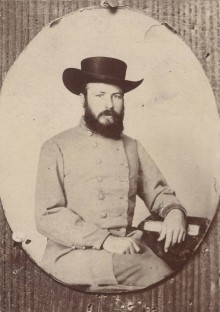Discover, Share, and help us Preserve our lost and forgotten stories.
Become an Alabama Pioneers Patron
Unlock all Alabama Pioneers stories
Alabama Pioneers members see thousands of stories, biographies, and nostalgic items like this everyday.
EARLY HISTORY OF SOUTHEAST ALABAMAi
By W. L. Andrews
1899
The Cooley Trail
This country when first found by the early settlers was open, the only growth being large trees, Even on the larger streams and creeks the growth consisted of oak, hickory, elm, ash and other trees, there being an entire absence of the small bushy growth now plentiful. In the lower stiff lands reed was abundant, and in places to this day reed is found growing.
It is natural in the absence of shade that grasses grow luxuriantly and furnish the finest pasturage for large game and the stock brought into the country. Indeed it was the stories of game and fine pasturage Carried back by those who came over to spy the country that induced many of the early settlers to leave their native hearths for pastures new where adventure held a charm for every man. Many men of wealth and influence together with those less fortunate in the race of life, came here by wagon train bringing their slaves, cattle, hogs, horses and other stock,; and pitched their tents in the forest exposed to the raids of red skins and the ravages of bear, panther and other ferocious beasts. It took courage to face the new conditions, but these early settlers had nerve which soon developed a heroism of which their descendants feel proud.
Among those who came here in the early Twenties was Allen Cooley of South Carolina. He brought his slaves as well as stock and among other things, his son William had an Indian pony mare, bereft of one ear. He settled three miles southeast of the town where the Ketchums now reside, and after belling his horses turned them on the range. One night when the stock came up “crap” was missing. She failed to come up the next day, and the day after Mr. Cooley instituted a search which revealed the fact that the animal had started away from her new home and gone in a northerly direction. He and his son started to follow the trail. They took a hatchet along with which to blaze the trail so they might not get lost in the forest.
They tracked her along by the spring heads west of the square, on up through old Ozark and up Henry Block’s two miles this side of Louisville where she had stopped and had been taken up, Neither family knew of the other at that time, but the incident served to make friends of them and they exchanged visits.
When Henry (County) was divided and its territory became Dale and Henry counties the county seat at Old Richmond, or Wiggin’s Springs, ten miles east of Newton, ceased to be the judicial centre, the courthouse for Dale being located at Daleville and that for Henry at Columbia. Soon after a commission was appointed to view out a road from Daleville to Louisville with instructions to follow as closely as possible the Cooley trail after they reached it. The road then established with little change is the road now traveled between these two points by way of Ozark, opened up this immediate vicinity for its first settlements.
Among the first to traverse the expanded trail were John Merrick, Sr., and his son John Merrick Jr., who resided in Barbour county. Seeing this was a goodly land the Merricks decided to make it their home, and the senior Merrick entered the parcel of land on which the present town of Ozark is partly built and erected a log house in which to live in the midst of the street, a little north of the Andrews boarding house. That was the first settlement made in what is now Ozark. Across the new road, near where Sheriff M. C. Dowling’s residence stands, Merrick built a small log house in which he kept whiskey. In those days there were many mighty and voracious reptiles in this country, and an antidote of this kind was considered the sine qui non of every household. This was the first mercantile venture for this section and the new locality was called Merrick’s. Having married Miss Anna Mathews, daughter of Moses Mathews, John Merrick, Jr., settled the place now owned and occupied by T. G. Blackman, Sr., and in 1837 built another log store there in which liquors were sold. He prospered and his wealth and honors increased.
Citizen soldiery was the rage in those days and every beat was organized with its muster ground conveniently located where musters were held quarterly. The muster ground for this beat was at what- is now known as the Carroll church, though it was settled by Curtis Byrd in 1828. John Merrick, Jr., was commissioned Colonel of the county militia in 1840.
Mercantile businesses start
In 1844 John D. Worrell moved to Woodshop from Barbour county and opened a mercantile business on a more extensive scale, carrying dry goods and a general assortment of merchandise.
After a year or so he followed the early trend of settlers in this direction and built a small store on top of the hill where the residence of James Moseley now stands,
It was not until the spring of 1851 that another mercantile venture was made when W. KL & F. M. Martin, brothers, built a small log house to the north of John Merrick’s establishment and put in a small stock. But they dissolved in the fall and quit business.
In 1852 Tom Bullard came in and bought out the Merrick stand and continued business there for a short time and then built a small board store house near the road and opened up. The post office at Woodshop having been discontinued because it was much trouble with little compensation to the postmaster, the community asked the general government to establish an office at Bullard’s. The request was granted and Tom Bullard was appointed postmaster, the name Woodshop being retained.
On the 1st of Sept. 1853, Mr. E. T. Matthews bought an interest in Mr. Bullard’s business and they continued the enterprise under the firm name of Bullard & Matthews until the spring of 1855, when Mr. Matthews purchased Mr. Bullard’s interest and became sole proprietor.
New Postmaster and town changes its name
It was now necessary to have a new postmaster, and accompanying the petition was a request that the name be changed from Woodshop to Ozark. The name occurred to Mr. E. T. Matthews from reading the history of the Ozark tribe of Indians which inhabited the section of country traversed by the Ozark mountains in Missouri and Arkansas.
Mr. Matthews was appointed to succeed Mr. Bullard as postmaster. He then enlarged the building, a portion of which still stands and being of a wealthy family he readily found means to largely increase the capacity of his establishment for serving the public.
In 1856 Mr. J. H. Carroll, son of Major Jim Carroll, Sr., erected a building across the road and opened up a stock of groceries. In 1858, a partnership was formed between Jno. W. Dowling, Jr., F. M. Martin and J. H. Carroll, under the firm name of Carroll, Dowling & Martin. These firms continued business until the war broke out, when business became demoralized and one after the other of these gentlemen enlisted to fight for the cause of the Confederacy. The stirring, exciting scenes of the sixties are reserved for a special chapter, which will follow later.
iThis is a transcribed excerpt from a serial article published in the Southern Star, Ozark, Ala., beginning May 10, 1899. Lacking biographical material concerning Mr. W. L. Andrews, author of a series of articles published in the Southern Star, Ozark, Alabama, in May and June, 1899, the Editor of this publication is reproducing a clipping from the Alabama Historical Society Collections, Volume 1. The Collections were edited by the late Thomas M. Owens, to whom Mr. Andrews had written as follows:
“In 1885 I set out to write a history of this county (Dale), and since then have gathered complete information of its history from DeSoto’s landing at Tampa Bay, 1539. Of course, nothing much of importance attaches to this section prior to the territorial period of the State, except the settlement between foreign powers of the questions of jurisdiction, and finally the settlement of disputes which placed this section under the jurisdiction of Georgia. Up to this time, however, the facts are all of public record. Since that time none of its history has been published in book form. While my work has been directed more especially towards getting out a history of Dale County, that could not be done without involving the history of Henry, Geneva, Coffee, Pike and Barbour, because the first three, together with Dale, were organized in 1824 as “Henry County.”
“Last summer (1899) I traveled all over these counties by private conveyance to gather such authentic information as I might find in the hands of the people. Of this I found much in the form of letters, documents, various records, and statements of persons who either took part in the events, or whose parents had. In this way I secured a complete list of all the county officers from 1824, the organization of the militia and its history, the first settlements, customs of the people, material development, Church and temperance history Indian war, Indian Massacres, with names of persons and particulars of their barbarities, capture of Indians, their disposal, Jackson’s march through the county, where he crossed the streams, first settler, and settlers, first house, and houses, first mill, who raised first cotton: War period, — Invasion by the enemy, battles with them, people murdered by deserters, killing of Lieut. Spears, and the whole detail — Days of Reconstruction and their horrors. Rise of the Populites, especially with reference to the fight of 1892 — subsequent history to date. Burning of court house, fights over county seats, questions affecting the early settlers on the subject. And much more.”
SOURCE
The Alabama Historical Quarterly, Vol. 10, Nos. 01, 02, 03, & 04, 1948.
ALABAMA FOOTPRINTS – Volume I – IV: Four Volumes in One
The first four Alabama Footprints books have been combined into one book,
ALABAMA FOOTPRINTS Exploration
ALABAMA FOOTPRINTS Settlement
ALABAMA FOOTPRINTS Pioneers
ALABAMA FOOTPRINTS Confrontation
From the time of the discovery of America, restless, resolute, brave, and adventurous men and women crossed oceans and the wilderness in pursuit of their destiny. Many traveled to what would become the State of Alabama. They followed the Native American trails and their entrance into this area eventually pushed out the Native Americans. Over the years, many of their stories have been lost and/or forgotten. This book (four-books-in-one) reveals the stories published in volumes I-IV of the Alabama Footprints series.
ALABAMA FOOTPRINTS Immigrants
ALABAMA FOOTPRINTS Statehood
ALABAMA FOOTPRINTS Removal
ALABAMA FOOTPRINTS Banished





